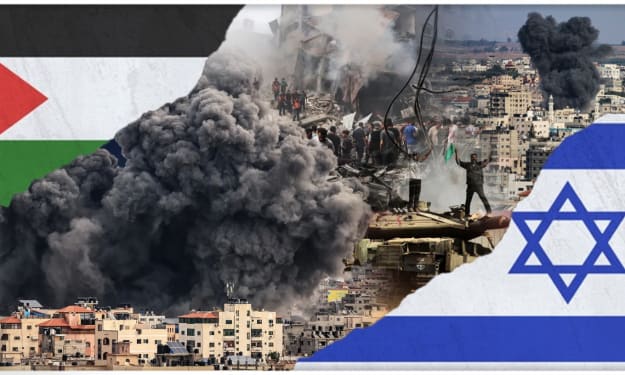The Ukraine and Russia War
The ongoing armed conflicts

The ongoing conflict between Ukraine and Russia is a complex and sensitive issue, with deep historical, political, and social roots. The conflict began in 2014, after the Ukrainian revolution that ousted pro-Russian President Viktor Yanukovych, and has escalated into a full-scale war in eastern Ukraine. Here is a detailed overview of the conflict:
Causes of the Conflict:
1. Political differences: The main cause of the conflict is the political differences between Ukraine and Russia. Ukraine wants to align itself with Europe and the West, while Russia wants to maintain its influence in the region and keep Ukraine within its sphere of influence.
2. Ethnic and linguistic differences: There are significant ethnic and linguistic differences between Ukraine and Russia, with Ukraine having a majority of Ukrainians who speak Ukrainian, and Russia having a majority of Russians who speak Russian. This has led to tensions and conflicts between the two nations.
3. Territorial disputes: Another factor contributing to the conflict is the territorial dispute over Crimea, which was annexed by Russia in 2014. Ukraine considers Crimea to be a part of its territory, while Russia sees it as a separate entity with its own history and culture.
4. Economic interests: The conflict is also driven by economic interests, with both countries vying for control over the natural resources of eastern Ukraine, particularly coal and steel.
Key Events of the Conflict:
1. Ukrainian Revolution: In 2014, protests in Kiev led to the ouster of President Yanukovych, who was replaced by Petro Poroshenko. This led to a wave of pro-Russian protests in eastern Ukraine, which were violently suppressed by the Ukrainian military.
2. Annexation of Crimea: In March 2014, Russia annexed Crimea, citing the need to protect the rights of ethnic Russians living there. This move was widely condemned by the international community, and led to a significant increase in tensions between Ukraine and Russia.
3. Pro-Russian separatist movements: In the aftermath of the Ukrainian revolution, pro-Russian separatist movements began to take hold in eastern Ukraine, particularly in the Donetsk and Luhansk regions. These movements sought to break away from Ukraine and join Russia, leading to a violent conflict between the separatists and the Ukrainian military.
4. Military intervention: In 2014, Russia began to provide military support to the separatists, including troops and weapons. This intervention has been a major factor in the ongoing conflict, and has led to significant human suffering and loss of life.
5. Ceasefires and peace talks: Despite multiple ceasefires and peace talks, the conflict has continued to escalate, with both sides accusing each other of aggression and violations of the ceasefire agreements.
Current Status of the Conflict:
The conflict in Ukraine and Russia remains ongoing, with no clear end in sight. The situation on the ground is highly volatile, with both sides continuing to exchange fire and engage in skirmishes. The conflict has resulted in significant human suffering, displacement, and loss of life, with thousands of civilians killed and injured and millions more forced to flee their homes.
The international community has been involved in attempts to resolve the conflict through diplomatic efforts, but progress has been slow and inconsistent. The United States, the European Union, and other Western countries have imposed sanctions on Russia in response to its actions in Ukraine, while Russia has accused the West of meddling in its affairs and supporting the Ukrainian government.
Three Authoritative Reference Titles to Support the Answer:
1. "The Ukraine Crisis: What It Means for the West" by John J. Mearsheimer (2014) - This book provides a detailed analysis of the causes and consequences of the Ukraine crisis, and offers insights into the geopolitical implications of the conflict.
2. "Ukraine and the Art of Strategy" by David R. Marples (2017) - This book examines the strategic dimensions of the Ukraine conflict, including the role of propaganda, disinformation, and media manipulation.
3. "The War in Eastern Ukraine: A Legal Analysis" by Yoshiko Okuyama and Anton Katz (2018) - This article provides a legal analysis of the conflict in eastern Ukraine, including the application of international law and the responsibilities of the parties involved.
About the Creator
Prince Ansu
Its all about providing our readers with the best informative and educative contents to further enhance their knowlage over things happening around the globe. Our main goal is to contribte to our readers personal growth and developments.
Reader insights
Outstanding
Excellent work. Looking forward to reading more!
Top insights
Compelling and original writing
Creative use of language & vocab
Easy to read and follow
Well-structured & engaging content
Heartfelt and relatable
The story invoked strong personal emotions
Masterful proofreading
Zero grammar & spelling mistakes
On-point and relevant
Writing reflected the title & theme






Comments
There are no comments for this story
Be the first to respond and start the conversation.